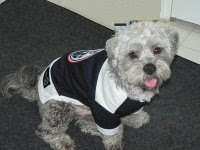Tuesday's Coming Attractions...
"And what am I without my Buffo's face? Why, nobody at all. Take away my make-up and underneath is merely not-Buffo. An absence. A vacancy" (Carter 142).
"It was a panopticon she forced them to build, a hollow circle of cells shaped like a doughnut, the inward-facing wall of which was composed of grids of steel and, in the middle of the roofed, central courtyard, there was a round room surrounded by windows" (Carter 247).
Some thoughts...
Teaching novels such as Geek Love and Nights at the Circus tests the limits of acceptability. I've been surprised by the multiple comments made on how offensive and disturbing the texts are - making readers uncomfortable with the characters and disassociated from the narrative. Why shouldn't literature offend? Television is full of despicable, discomforting, and even repulsive characters that garner praise from critics and adoring audiences (House, Samantha, Sylar, Spike, Chuck Bass, etc). Generally speaking, shows with only good looking, happy, and successful people performing good acts don't get very far - we aren't interested in dull perfection as viewers. The most popular characters are crass, selfish, and manipulative. Yes, often there's a little storyline to make them more "human" for certain viewers and to give more depth to their ways; however, the characters we love to hate are generally more popular than good little heroes (and even the good guys and dolls usually venture to the dark side at some point, even if just temporarily, in order to expand their roles beyond the boundaries of a boring box).
Authors such as Dunn and Carter challenge us as readers to question the limits of our comfort. The clowns and the images of the panopticon in Carter's novel serve as tools for Carter's reader challenge: clowns symbolize a (dis)comfort. I used to love clowns at birthday parties because I was both afraid and intrigued by them. Until I read IT and never wanted to find myself in the same room as a clown again. Clowns, intended to entertain, are portrayed by Carter as complicated figures locked behind a mask and battling despair. The clown, a symbol of the carnival, becomes a trope for the panopticons throughout the novel.
The actual panopticons in the novel (whorehouse, museum of women monsters, the prison, etc), fall to pieces - Carter subverts the patriarchal representation of the panopticon with these symbolic structures. But the clown, as a figurative panopticon, is confined to a masquerade under constant watch. Without the viewer, the clown ceases to exist: "As long as a child remembers..." (141).
Indeed, disturbing and discomforting. Given what graces our television screens and city streets, however, it takes someone theoretically complex like Carter to push our limits and think beyond the box - to confront our own discomforting and at times exploitative responses.


I don't find the subject matter all that offensive, partially due to my less than stellar upbringing but also a recognition of the appropriate tone of these kinds of works. While it may be stereotypical, I thinks it's legitimate to believe that carnies and circus performers would talk like this, thus making the tone of the novels all the more believable.
ReplyDelete